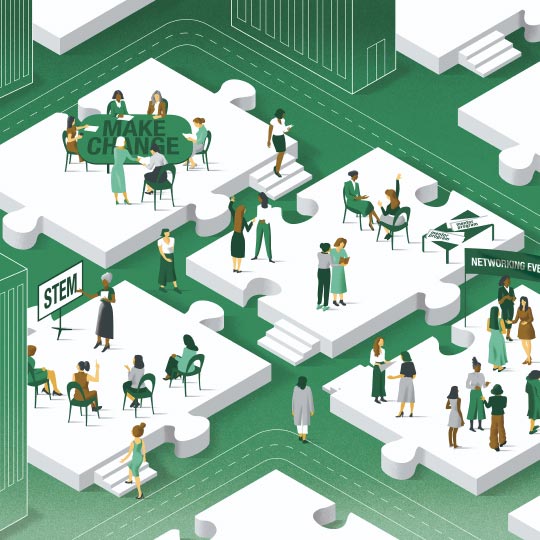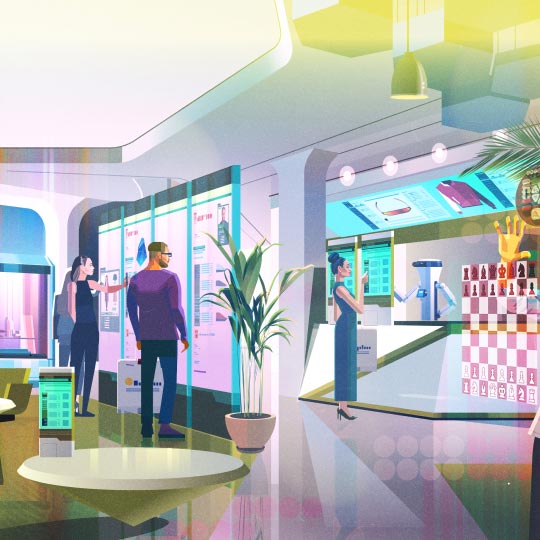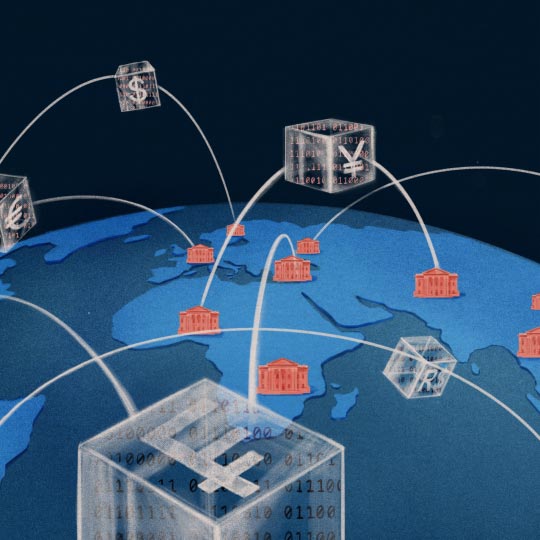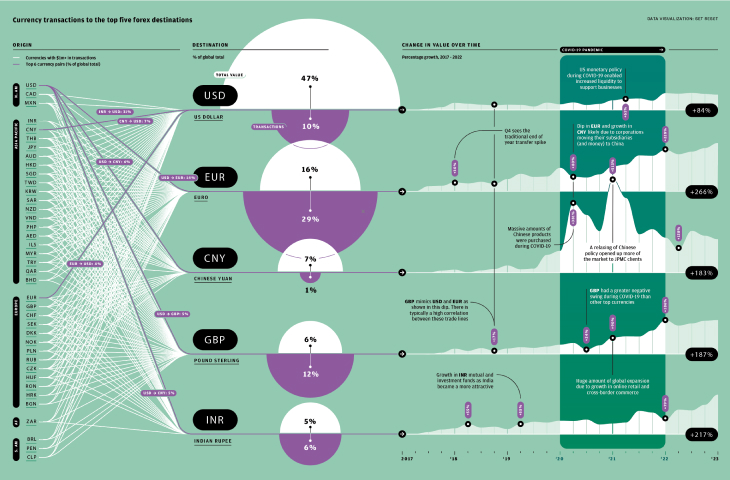From startups to legacy brands, you're making your mark. We're here to help.
-
Innovation Economy
Fueling the success of early-stage startups, venture-backed and high-growth companies.
-
Midsize Businesses
Keep your company growing with custom banking solutions for middle market businesses and specialized industries.
-
Large Corporations
Innovative banking solutions tailored to corporations and specialized industries.
-
Commercial Real Estate
Capitalize on opportunities and prepare for challenges throughout the real estate cycle.
-
Community Impact Banking
When our communities succeed, we all succeed. Local businesses, organizations and community institutions need capital, expertise and connections to thrive.
-
International Banking
Power your business' global growth and operations at every stage.
Key Links
Prepare for future growth with customized loan services, succession planning and capital for business equipment.
-
Asset Based Lending
Enhance your liquidity and gain the flexibility to capitalize on growth opportunities.
-
Equipment Financing
Maximize working capital with flexible equipment and technology financing.
-
Trade & Working Capital
Experience our market-leading supply chain finance solutions that help buyers and suppliers meet their working capital, risk mitigation and cash flow objectives.
-
Syndicated Financing
Leverage customized loan syndication services from a dedicated resource.
-
Commercial Real Estate
Capitalize on opportunities and prepare for challenges throughout the real estate cycle.
-
Employee Stock Ownership Plans
Plan for your business’s future—and your employees’ futures too—with objective advice and financing.
Key Links
Serving the world's largest corporate clients and institutional investors, we support the entire investment cycle with market-leading research, analytics, execution and investor services.
-
Institutional Investors
Putting your long-tenured investment teams on the line to earn the trust of institutional investors.
-
Markets
Direct access to market leading liquidity harnessed through world-class research, tools, data and analytics.
-
Prime Services
Helping hedge funds, asset managers and institutional investors meet the demands of a rapidly evolving market.
-
Global Research
Leveraging cutting-edge technology and innovative tools to bring clients industry-leading analysis and investment advice.
-
Securities Services Solutions
Helping institutional investors, traditional and alternative asset and fund managers, broker dealers and equity issuers meet the demands of changing markets.
Key Links
Providing investment banking solutions, including mergers and acquisitions, capital raising and risk management, for a broad range of corporations, institutions and governments.
-
Center for Carbon Transition
J.P. Morgan’s center of excellence that provides clients the data and firmwide expertise needed to navigate the challenges of transitioning to a low-carbon future.
-
Corporate Finance Advisory
Corporate Finance Advisory (“CFA”) is a global, multi-disciplinary solutions team specializing in structured M&A and capital markets. Learn more.
-
Development Finance Institution
Financing opportunities with anticipated development impact in emerging economies.
-
Sustainable Solutions
Offering ESG-related advisory and coordinating the firm's EMEA coverage of clients in emerging green economy sectors.
-
Mergers and Acquisitions
Bespoke M&A solutions on a global scale.
-
Capital Markets
Holistic coverage across capital markets.
Your partner for commerce, receivables, cross-currency, working capital, blockchain, liquidity and more.
Key Links
A uniquely elevated private banking experience shaped around you.
-
Banking
We have extensive personal and business banking resources that are fine-tuned to your specific needs.
-
Investing
We deliver tailored investing guidance and access to unique investment opportunities from world-class specialists.
-
Lending
We take a strategic approach to lending, working with you to craft the right financing solutions matched to your goals.
-
Planning
No matter where you are in your life, or how complex your needs might be, we’re ready to provide a tailored approach to helping your reach your goals.
Whether you want to invest on your own or work with an advisor to design a personalized investment strategy, we have opportunities for every investor.
-
Invest on your own
Unlimited $0 commission-free online stock, ETF and options trades with access to powerful tools to research, trade and manage your investments.
-
Work with our advisors
When you work with our advisors, you'll get a personalized financial strategy and investment portfolio built around your unique goals-backed by our industry-leading expertise.
-
Expertise for Substantial Wealth
Our Wealth Advisors & Wealth Partners leverage their experience and robust firm resources to deliver highly-personalized, comprehensive solutions across Banking, Lending, Investing, and Wealth Planning.
Explore a variety of insights.
Key Links
Insights by Topic
Explore a variety of insights organized by different topics.
Key Links
Insights by Type
Explore a variety of insights organized by different types of content and media.
Key Links
We aim to be the most respected financial services firm in the world, serving corporations and individuals in more than 100 countries.
Key Links
- Payments
- Payments Unbound
- Payments Unbound - Volume 2
- Should You Prepare to Transact in the Metaverse?

Should you be preparing to transact in the metaverse?
WIRED OP-ED
The metaverse—the grand concept of a shared virtual-reality world that could become the next version of the web—has gradually gained traction in the mainstream. The hype may be cooling, but tech giants and startups alike are still pouring vast sums of money and time into this space. That’s led many business leaders to ask: What is our metaverse strategy? Money in the metaverse has become a particular topic of speculation. How will buying and selling take place, and for what use cases? Who will control the go-to payment rails? Will those be fiat or crypto payments? What cut will the hardware gatekeepers take—and how will that shape the metaverse’s future?
These are complex, technical questions. But anyone strategizing to successfully conduct business in that future first needs to ask something more fundamental: How likely is it that the metaverse will actually happen in the first place? A helpful way to make a judgment about that is to consider the hurdles that would need to be overcome.
First off: The hardware is not there yet. Virtual reality and augmented reality headsets have made significant progress over the years, but they still have issues with latency—which can cause motion sickness—and the devices can be uncomfortable to wear for extended periods. Latency is not merely a function of headset technology, either: It is also something that needs tackling at the level of internet speed and broadband infrastructure. A future where the metaverse is the default way of experiencing the Web would require generationally better wireless internet and fiber networks. In the meantime, the first iteration of anything approximating what we might call “the metaverse” is likely to exist in a 2D or handset-based form.
Simulation technology is another challenge. While a raft of companies have made enormous progress on this front, we are still far from enabling an indefinite number of people to interact with each other in a highly detailed virtual world. The current limit for simultaneous users is around 4,000, and most virtual worlds lack the level of desired realism. The major metaverse players are investing heavily in supercomputing and AI in order to turbocharge the race to build advanced artificial realities. But this comes with its own set of challenges, not least those around superconductor manufacturing—such as supply chain snags or technical barriers—and the environmental impact of deploying more powerful computing at scale.
There’s also a human question to answer: Will people truly be interested in working, living and socializing in the metaverse? It will be down to developers to convince us this is a place we want to spend our time. In the eyes of some, it will enrich online interaction and create new opportunities to transform areas of our lives hitherto relatively untouched by the web. Education, for example, has never cracked the “remote” model—metaverse evangelists believe that a shared 3D environment is precisely what could change that. Ultimately, whether something remains the preserve of the offline world or shifts into the virtual will depend on convenience and benefits.
There are arguments on both sides of this debate, so where does that leave businesses? As ever, this is the challenge of predicting the future. Technology doesn’t tend to develop along a deterministic path—innovations create unforeseen behaviors which create new use cases and new innovations and so on. It’s a cyclical process that makes it hard to see more than a few years out.
Perhaps, then, it is more helpful to speak not of ‘the metaverse’—which is a conversation about “what would happen if various things coalesced at some point in years to come”—and better to talk in terms of the real technologies that are evolving today: VR, AR and virtual worlds. Spoken about in plain terms, rather than encumbered with the conceptual weight of ‘the metaverse’, it can bring clarity of thought. It also doesn’t rhetorically sneak in the idea that a particular future is inevitable. Then businesses can ask clear-eyed questions about how those technologies are evolving now; who’s using them for what; any use cases they are likely to usher in as they develop from there; and within what timeframes. After that, well, you pays your money...
BY WIRED
Need approved text
Need approved text
You're now leaving J.P. Morgan
J.P. Morgan’s website and/or mobile terms, privacy and security policies don’t apply to the site or app you're about to visit. Please review its terms, privacy and security policies to see how they apply to you. J.P. Morgan isn’t responsible for (and doesn’t provide) any products, services or content at this third-party site or app, except for products and services that explicitly carry the J.P. Morgan name.





































